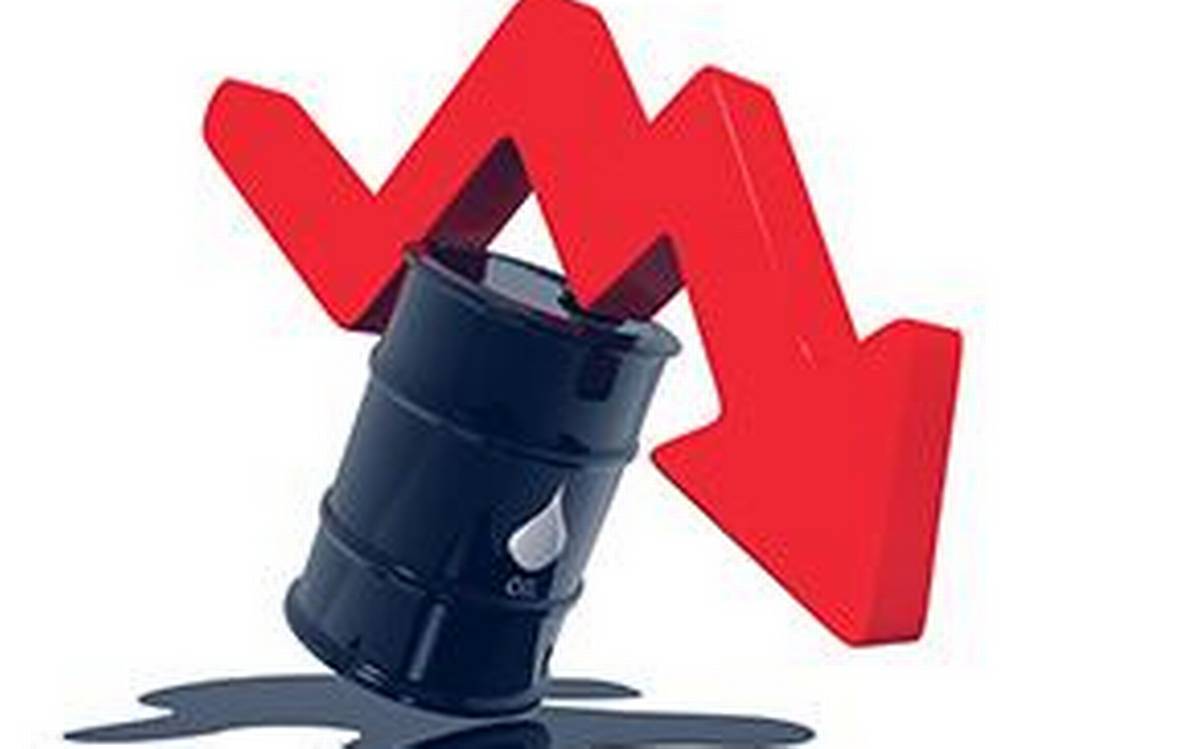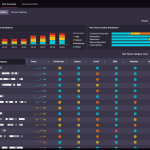Economy
Brent Crude Posts Gains on Decline in US Inventories

By Adedapo Adesanya
Brent Crude extended gains on Thursday, December 26, after the Christmas break, affected by data, which showed a weekly decline than expected in US crude inventories.
The data by the American Petroleum Institute (API) showed that U.S. crude supplies fell by 7.9 million barrels for the week ended December 20 which was more than analysts’ expectations of 1.83 million barrels.
As a result, Brent Crude continued to trade around the $66 mark on Thursday, climbing 59 cents or 0.89 percent to $66.75 per barrel, while the US West Texas Intermediate (WTI) crude was up by 57 cents or 0.93 percent to settle at $61.68 per barrel.
The outlook of the market had been looking positive following the agreement reached by the US and China on the trade war between the world’s two biggest economies that has affected global demand for crude.
The US President, Donald Trump had personally announced a phase one deal and scrapped tariffs on Chinese goods that were set to go into effect, and adding recently that he and the Chinese President, Xi Jinping will have a signing ceremony for the Phase 1 agreement to end their trade dispute that was put together earlier this month on Tuesday.
Also from Thursday, six products from the United States became exempt from tariffs as a further sign to establish a better relation affected by the eighteen-month long war.
The tariff waivers will apply to four chemical products, such as metallocene high-density polyethylene (HDPE) and a special grade of linear low-density polyethylene (LLDPE), and refined oil products that include white oil and food-grade petroleum wax.
However the market faced a new threat as the announcements about deeper output cuts by the Organization of the Petroleum Exporting Countries (OPEC) and non-OPEC producers such as Russia which was agreed during the December 6 meeting in Vienna to deepen production cuts by a further 500,000 barrels per day (bpd) risks bringing about lower demand which may affect this decision.
The OPEC alliance face stiff competition of more supply from the United States, Brazil, Norway, Guyana and recently a new partnership between Saudi Arabia and Kuwait. Both countries this week agreed to end a dispute over their Neutral Zone, which can supply as much as 500,000 barrels per day of oil, or about 0.5 percent of global demand.
Economy
Xenergi in Talks to Acquire 51% Stake in Premier Paints

By Aduragbemi Omiyale
One of the paint makers in Nigeria, Premier Paints Plc, is currently in talks with a new investor, Xenergi Limited, for the purchase of 51 per cent stake in the company.
Xenergi Limited intends to acquire shares of Clover Global Resources Limited and TGHL Capital Limited in the organisation.
Business Post gathered that the new investor will buy 39.02 per cent from Clover Global Resources Limited and 15.20 per cent from TGHL Capital Limited.
The deal, according to a regulatory notice issued on Tuesday on the Nigerian Exchange (NGX) Limited, will involve about 63 million shares of Premier Paints.
At the current share price of the paint producer, this should be about N630 million as it closed at N10.00 per unit on NGX on December 16, 2025.
“Subject to obtaining required regulatory approvals, the transaction is expected to close before January 31, 2026.
“The company will continue to inform the public of the progress of the transaction,” the disclosure signed by the company secretary, Alozie Nwokoro, said.
Economy
Naira Trades Flat Across FX Market Windows as CBN Moves to Ease Pressure

By Adedapo Adesanya
The Naira was flat against the US Dollar in the Nigerian Autonomous Foreign Exchange Market (NAFEX) on Tuesday, December 16, retaining the previous closing value of N1,451.82/$1.
In the same vein, the local currency saw no movement against the Pound Sterling and the Euro in the spot market during the session at N1,943.98/£1 and N1,705.74/€1, respectively.
Also, the Nigerian Naira remained unchanged in the black market yesterday at N1,475/$1 and was N1,460/$1 at the GTBank forex counter.
The Central Bank of Nigeria (CBN) has strengthened US Dollar supply with $250 million to authorised dealer banks at the official window cumulatively as foreign portfolio investors, exporters and non-bank corporate supply dripped.
The spread between official and other non-regulated markets decreased to N30.59$/1 from N44.57/$1, from the previous week, research subsidiary of Coronation Merchant Bank Limited said in a report.
FX analysts said foreign exchange inflows through the Nigerian Foreign Exchange Market decreased to $716.3 million from $844.70 million in the previous week , a 15 per cent drop in a week.
Foreign portfolio investors accounted for the highest share of inflows at 32.98 per cent, followed by exporters at 30.84 per cent, the CBN (17.36 per cent), Non-bank Corporates (16.94 per cent), others (0.72 per cent) and Individuals (0.63 per cent).
On Monday, Nigeria’s headline inflation rate eased to 14.45 per cent in November 2025, down from 16.05 per cent recorded in October, according to the latest Consumer Price Index (CPI) report released by the National Bureau of Statistics (NBS), representing a decrease of 1.6 percentage points month-on-month and marks a significant moderation compared to the same period last year.
As for the cryptocurrency market, there was some recoveries after overall capitalization falling below $3 trillion for the third time in a month. Large-cap assets, particularly those with Exchange Traded Fund (ETF) exposure, are experiencing selling pressure as institutional investors reassess risk.
Ripple (XRP) appreciated by 1.5 per cent to $1.92, Litecoin (LTC) expanded by 1.5 per cent to $78.91, Dogecoin (DOGE) rose by 0.8 per cent to $0.1308, Solana (SOL) went up by 0.4 per cent to $127.60, Binance Coin (BNB) grew by 0.3 per cent to $865.40, and Bitcoin (BTC) gained 0.2 per cent to sell at $86,735.17.
On the flip side, Cardano (ADA) depreciated by 1.0 per cent to $0.3802 and Ethereum (ETH) slumped by 0.4 per cent to $2,935.85, while the US Dollar Tether (USDT) and the US Dollar Coin (USDC) were flat at $1.00 each.
Economy
Stock Investors’ Portfolios Swell N14bn as Index Rises 0.01%

By Dipo Olowookere
A marginal 0.01 per cent rise was recorded by the Nigerian Exchange (NGX) Limited on Tuesday. This was different from the flattish mode of the market the previous day.
Investor sentiment remained bullish as Customs Street finished with 31 price gainers and 26 price losers, implying a positive market breadth index.
Aluminium Extrusion topped the gainers’ log after it improved its price by 10.00 per cent to N9.35, Guinness Nigeria appreciated by 9.98 per cent to N263.40, Multiverse expanded by 9.95 per cent to N12.15, MeCure Industries also soared by 9.95 per cent to N45.85, and Sovereign Trust Insurance advanced by 9.89 per cent to N4.11.
Conversely, Haldane McCall led the losers’ chart after it shed 9.93 per cent to settle at N3.72, Veritas Kapital lost 9.09 per cent to close at N1.60, LivingTrust Mortgage Bank also declined by 9.09 per cent to N3.50, and Linkage Assurance depreciated by 5.71 per cent to N1.65.
During the trading day, the All-Share Index (ASI) went up by 21.23 points to 149,459.11 points from the previous day’s 149,437.88 points and the market capitalisation increased by N14 billion to N95.281 trillion from N95.267 trillion.
Yesterday, traders transacted 1.0 billion equities for N21.8 billion in 23,701 deals compared with the 553.1 million equities valued at N13.3 billion traded in 28,907 deals on Monday, representing a decline in the number of deals by 18.01 per cent, and a surge in the trading volume and value by 80.80 per cent and 63.91 per cent apiece.
Access Holdings traded 385.8 million stocks worth N7.7 billion, Champion Breweries transacted 111.8 million shares valued at N817.8 million, Sterling Holdings exchanged 85.5 million equities for N589.9 million, FCMB sold 74.7 million shares valued at N791.5 million, and First Holdco transacted 51.9 million equities worth N1.8 billion.
-

 Feature/OPED6 years ago
Feature/OPED6 years agoDavos was Different this year
-
Travel/Tourism9 years ago
Lagos Seals Western Lodge Hotel In Ikorodu
-

 Showbiz3 years ago
Showbiz3 years agoEstranged Lover Releases Videos of Empress Njamah Bathing
-

 Banking7 years ago
Banking7 years agoSort Codes of GTBank Branches in Nigeria
-

 Economy3 years ago
Economy3 years agoSubsidy Removal: CNG at N130 Per Litre Cheaper Than Petrol—IPMAN
-

 Banking3 years ago
Banking3 years agoFirst Bank Announces Planned Downtime
-

 Banking3 years ago
Banking3 years agoSort Codes of UBA Branches in Nigeria
-

 Sports3 years ago
Sports3 years agoHighest Paid Nigerian Footballer – How Much Do Nigerian Footballers Earn

















